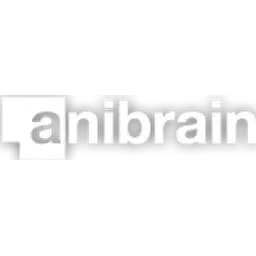Finding Anime That Truly Matches Your Taste
Most anime fans have experienced the frustration of vague, popularity-driven recommendations that fail to capture their specific preferences. Mainstream streaming platforms often suggest the same widely-watched shows to everyone, regardless of individual taste, because their algorithms aren’t optimized for the unique characteristics of anime.
Specialized anime recommendation engines employ sophisticated algorithms designed specifically to analyze the distinctive elements of anime and match them to individual preferences. These systems go far beyond simple genre matching, considering factors like narrative structure, visual style, character archetypes, thematic elements, and even directorial tendencies.
This guide examines the three most effective anime recommendation engines currently available, exploring how they work and what makes them uniquely valuable for discovering your next favorite anime.
1. AniBrain AI
AniBrain AI is a specialized recommendation platform focused exclusively on Japanese media, utilizing artificial intelligence to generate personalized content suggestions across anime, manga, light novels, and one-shots.
How It Works:
AniBrain AI employs a sophisticated recommendation system that likely combines collaborative and content-based filtering approaches. The engine processes user input about preferences and previously enjoyed content to build a personalized taste profile. While the exact algorithmic details aren’t publicly disclosed, user feedback suggests it employs advanced pattern matching to identify connections between content that goes beyond simple genre categorization.
The platform allows users to input anime they’ve enjoyed, then generates recommendations through an AI system that analyzes these preferences against its content database. Its filtering system enables users to narrow suggestions by specific criteria including genre, year, score, and country of origin, allowing for more targeted recommendations.
Key Features:
- AI-driven personalization: Generates suggestions tailored to individual taste profiles
- Cross-media recommendations: Covers anime, manga, light novels, and one-shots
- Granular filtering: Allows refinement by genre, year, score, and country
- Random discovery option: Provides unexpected suggestions outside standard recommendations
- Content filtering: Includes adult content options (requires sign-in)
- Planned integrations: Future MAL and AniList synchronization for improved recommendations
Community Reception:
User feedback on platforms like Reddit has been notably positive, with several users describing AniBrain as one of the best recommendation engines they’ve encountered for anime and manga discovery. Many highlight its ability to suggest content that genuinely aligns with their tastes rather than simply promoting popular titles.
The platform has experienced some periods of downtime and revival, suggesting ongoing development, and some users have reported browser-specific compatibility issues with filtering controls.
Best For: Users seeking AI-powered recommendations across multiple Japanese media formats who want genuinely personalized suggestions rather than popularity-based recommendations.
2. Sprout Anime Recommender
Sprout Anime Recommender is an interactive recommendation engine that leverages neural networks and machine learning to analyze entire anime viewing histories for personalized suggestions.
How It Works:
Sprout employs a sophisticated neural network architecture trained on data from MyAnimeList users. What distinguishes Sprout’s approach is its ability to analyze a user’s complete anime list simultaneously rather than making recommendations based solely on individual titles. This holistic analysis allows the system to identify complex patterns and relationships between different anime and user ratings that might not be apparent through simpler recommendation methods.
The technical foundation involves importing a user’s MyAnimeList or AniList profile data, which provides the neural network with a comprehensive view of their watching history and ratings. For users without existing profiles, Sprout offers an interactive recommendation system that builds a preference profile through direct interaction.
Key Features:
- Neural network analysis: Uses deep learning to evaluate entire watch histories
- MyAnimeList/AniList integration: Direct connection to existing anime tracking platforms
- Interactive recommendation: System for users without MAL/AniList accounts
- Comprehensive filtering: Options to refine suggestions by various criteria
- Atlas Visualization: Interactive map of the anime landscape showing relationships between titles
- Open source development: Complete code transparency and community contribution
Community Reception:
Reddit users have reported generally positive experiences with Sprout’s recommendation accuracy. Several users noted that the system successfully recommended shows they had previously watched and enjoyed but had forgotten to add to their tracking lists—a strong indicator of the algorithm’s effectiveness.
Some feedback suggests the recommendations might favor shows users are already aware of rather than introducing completely unknown titles, though the developer has acknowledged this and indicated plans for further filtering options to address this limitation.
Best For: MAL and AniList users looking for recommendations based on their complete watching history, and those who appreciate a data-driven approach to anime discovery with visual exploration tools.
3. Simkl’s Recommendation Engine
Simkl’s Recommendation Engine is integrated within a broader tracking platform for TV shows, anime, and movies, offering dual recommendation approaches and AI-powered tag analysis.
How It Works:
Simkl employs multiple recommendation methodologies working in parallel. The platform maintains two separate recommendation engines for each media type, providing users with alternative suggestion streams. A particularly innovative aspect is Simkl’s implementation of a Large Language Model (LLM) specifically for tag analysis. This AI system examines tags and thematic elements from content a user has watched, creating unique tag combinations that directly connect to discovery pages filtered according to the user’s demonstrated interests.
The recommendation system benefits from Simkl’s primary function as a tracking platform, which provides rich data about user viewing habits, completion rates, and implicit preferences through behavioral analysis. This integration of tracking and recommendation creates a feedback loop where user behavior continuously refines the recommendation algorithm’s understanding of their preferences.
Key Features:
- AI tag analysis: LLM-powered system for identifying thematic preferences
- Dual recommendation engines: Alternative suggestion streams for varied discovery
- Community recommendations: Explore suggestions from other Simkl members
- Hidden gem discovery: Specialized focus on lesser-known quality content
- Automatic tracking: Scrobbling from supported streaming services
- Cross-media recommendations: Unified system across anime, TV shows, and films
Community Reception:
User reviews of Simkl present a mixed picture. While many Reddit users praise its comprehensive tracking capabilities and recommendation features, reviews on app stores mention usability challenges related to the interface design.
The platform appears to have strong technical recommendation capabilities that some users find valuable, particularly the ability to discover content through tag combinations and community suggestions, though the presentation of these features receives varied feedback regarding intuitive use.
Best For: Users who want recommendations integrated with their watching habits across multiple media types, particularly those who value tag-based discovery and finding hidden gems beyond mainstream content.
Honorable Mention: GitHub Anime Recommendation Projects
While not consumer-ready platforms, numerous open-source implementations on GitHub demonstrate various approaches to anime recommendation algorithms, from collaborative filtering to deep learning techniques.
Several notable examples include:
Sajid030’s anime-recommendation-system implements both user-based and item-based collaborative filtering approaches using neural networks built with TensorFlow and Keras.
Gaelblanchard’s anime_recommendation_engine employs PySpark to build a recommendation system using techniques like cosine similarity and Pearson correlation.
Aysenurcftc’s Content-based_anime_recommendation_system focuses specifically on content-based approaches using cosine similarity calculations based on anime genres and synopses.
Iaadesh’s MyAnimeList-Hybrid-Recommender-System demonstrates a hybrid approach combining content-based and collaborative filtering methodologies.
These projects serve primarily as educational resources and technical demonstrations rather than consumer-facing platforms, but they provide valuable insights into recommendation system implementation for technically-inclined anime fans.
How Recommendation Algorithms Work
The effectiveness of anime recommendation engines depends on their underlying algorithms, which generally fall into three main categories: collaborative filtering, content-based filtering, and hybrid approaches. Each methodology has distinct strengths and limitations that affect recommendation quality.
Collaborative Filtering
Collaborative filtering recommends anime based on the preferences of users with similar taste profiles, operating on the principle that people who agreed in the past will likely agree in the future.
This approach identifies patterns in user behavior without needing to understand the content itself. It analyzes who liked what and finds correlations between users or items. There are two main variants:
User-Based Collaborative Filtering identifies users whose rating patterns correlate with yours, then recommends anime these similar users enjoyed that you haven’t watched. For example, if users A and B have historically rated anime similarly, and user A enjoyed “Steins;Gate” which user B hasn’t seen, the system would recommend it to user B.
Item-Based Collaborative Filtering focuses on relationships between anime themselves. If many users who enjoyed “Cowboy Bebop” also rated “Samurai Champloo” highly, the system will recommend “Samurai Champloo” to new viewers who like “Cowboy Bebop”—regardless of genre categorization.
Key algorithms in collaborative filtering include K-Nearest Neighbors (KNN) for identifying similar users or items, and Singular Value Decomposition (SVD) for discovering latent factors representing user preferences and anime characteristics.
Collaborative filtering excels at discovering non-obvious connections between anime that might not be apparent from content descriptions alone. However, it struggles with the “cold start” problem for new users or anime with limited ratings, and can reinforce popularity bias.
Content-Based Filtering
Content-based filtering recommends anime based on the actual characteristics of the shows themselves and how they match with a user’s demonstrated preferences.
This approach creates detailed profiles for each anime based on attributes like genre, themes, studio, director, character types, setting, and plot elements. It then constructs a preference profile for each user by analyzing which content attributes appear frequently in anime they’ve rated highly.
Unlike collaborative filtering, content-based systems don’t require data from other users to function effectively, making them valuable for niche anime or new releases with limited user interaction data.
Key techniques include TF-IDF (Term Frequency-Inverse Document Frequency) for converting text descriptions into numerical vectors, and cosine similarity for measuring the similarity between content profiles.
Content-based filtering excels at finding anime with similar themes, styles, or narrative elements to those a user has enjoyed. It works well even for obscure anime and isn’t subject to popularity bias. However, it may struggle to surprise users with unexpected recommendations since it focuses on content similarity rather than discovering novel connections.
Hybrid Approaches
Hybrid recommendation systems combine multiple recommendation methodologies to overcome the limitations inherent in individual approaches and provide more robust, accurate suggestions.
These systems integrate collaborative and content-based filtering through various strategies, such as weighted combinations, switching systems that select the most appropriate algorithm based on the current situation, or feature augmentation approaches that enrich collaborative models with content data or vice versa.
Advanced hybrid systems might employ ensemble methods that train multiple recommendation models simultaneously and combine their predictions, or use cascading approaches where one method refines the results of another.
Cutting-edge techniques in hybrid systems include Graph Neural Networks (GNNs) for modeling complex relationships between users and anime, BERT embeddings for deep understanding of anime descriptions, and Variational Autoencoders (VAEs) for generating latent representations of user preferences.
Hybrid approaches generally outperform single-methodology systems by combining strengths and mitigating weaknesses. They handle cold-start problems better than pure collaborative filtering and provide more surprising recommendations than pure content-based systems. However, they require more complex implementation and greater computational resources.
Comparing Recommendation Approaches
| Feature | AniBrain AI | Sprout Anime Recommender | Simkl’s Recommendation Engine |
|---|---|---|---|
| Primary Algorithm | Hybrid (likely) | Neural Network/Collaborative | Hybrid with LLM integration |
| Integration with Tracking | Planned MAL/AL integration | Direct MAL/AL import | Built-in tracking platform |
| Media Coverage | Anime, manga, light novels | Anime only | Anime, TV, movies |
| Interface | Web-based | Web-based with visualization | Web and mobile apps |
| Special Feature | Random discovery button | Atlas visualization map | Tag-based LLM analysis |
| Best For | Cross-media discovery | Data-driven anime exploration | Tracking integration |
How to Get the Most from Anime Recommendation Engines
Rate Honestly, Not Aspirationally
For recommendation engines to work effectively, rate anime based on your genuine enjoyment rather than perceived critical merit. Rating shows you “should” like but didn’t actually enjoy will skew your recommendations.
Provide Sufficient Data
Most collaborative filtering systems need 25-30 rated anime across different genres to begin generating meaningful personalized recommendations. Content-based systems can work with fewer ratings (10-15) but benefit from diversity in your inputs.
Use Multiple Engines
Different recommendation systems have different strengths. Using several in combination provides the most comprehensive view of potential anime you might enjoy.
Consider Your Goals
Choose engines based on your discovery needs—content-based systems for similar anime to favorites, collaborative systems for surprising discoveries, and hybrid approaches for balanced recommendations.
Conclusion
The science of anime recommendation has evolved significantly beyond simple genre matching or popularity lists. While no system is perfect, the specialized engines highlighted in this guide represent the current state of anime recommendation technology, employing advanced machine learning techniques to understand the complex factors influencing anime preferences.
🔍 Finding Your Next Anime
Why do mainstream streaming platforms often give poor anime recommendations?
General streaming platforms typically optimize for total platform engagement rather than individual content satisfaction. Their algorithms lack anime-specific metadata (detailed tags, staff information, narrative structures) needed for nuanced matching. They also tend to recommend popular content that appeals to the broadest audience rather than truly personalized selections.
Specialized anime recommendation engines employ domain-specific knowledge about anime characteristics and dedicated algorithms trained specifically on anime viewing patterns. These specialized systems can recognize subtle connections between shows based on factors like directorial style, narrative structure, and thematic elements that mainstream algorithms might miss entirely.
How many anime should I rate to get good recommendations?
The minimum threshold varies by algorithm type:
Collaborative filtering systems like Sprout typically need 25-30 rated anime distributed across different genres to identify meaningful patterns and similar users.
Content-based systems can generate reasonable recommendations with as few as 10-15 ratings, as they’re analyzing content characteristics rather than user similarities.
Hybrid systems like AniBrain AI benefit from 15-20 diverse ratings for optimal performance.
Quality of ratings matters more than quantity. Rating a diverse selection of shows (including those you disliked) provides more informative data than rating many similar shows.
Which data sources do recommendation engines use for anime information?
Recommendation engines utilize several key data sources to power their algorithms:
Kaggle’s Anime Recommendation Database - A widely-used public dataset containing information on thousands of anime titles and millions of user ratings
MyAnimeList and AniList APIs - Direct integrations with these platforms allow engines like Sprout to access comprehensive user ratings and anime metadata
User-generated data - Both explicit feedback (ratings, reviews) and implicit feedback (viewing history, watch time) provide crucial information about preferences
Anime-specific metadata - Detailed information about genres, themes, studios, directors, voice actors, and other attributes enables content-based analysis
The quality and comprehensiveness of these data sources directly impact recommendation accuracy, with specialized anime platforms generally having access to more detailed and anime-specific information than general streaming services.
How accurate are anime recommendation algorithms?
Modern machine learning approaches have demonstrated impressive accuracy in predicting anime preferences, particularly when sufficient training data is available. Systems employing collaborative filtering techniques typically achieve prediction accuracies of 70-80% for users with established viewing histories.
Recent research using neural networks and hybrid approaches shows even higher accuracy, with some systems achieving Mean Absolute Error (MAE) rates below 0.7 on a 10-point scale. This means predictions are typically within one rating point of a user’s actual preferences.
However, accuracy varies significantly based on multiple factors: the uniqueness of a user’s taste profile, the size and quality of the training dataset, the specific algorithms employed, and the diversity of a user’s anime exposure. No system can achieve perfect prediction due to the inherently subjective nature of entertainment preferences.
What's the difference between anime finder tools and recommendation engines?
Anime finder tools typically rely on explicit search criteria and filtering options that users manually select (e.g., genre, year, length, rating). They return results matching these criteria without personalizing based on individual taste patterns.
True recommendation engines use algorithms to analyze personal preference data (viewing history, ratings) and identify patterns that might not be obvious to the user themselves. They can discover non-obvious connections between anime and make predictions about what a specific user will enjoy based on mathematical models rather than explicit search parameters.
The most sophisticated systems, like those covered in this article, combine aspects of both approaches—offering algorithmic recommendations that can be refined through explicit filtering options to provide both personalization and user control over discovery.




